Sun flares can add beauty and drama to your photos. Cameras and lenses are designed to cut down on flare – so when it comes to sun flares, you are a rule breaker right from the start.
In this article, I share 14 tips to help you get started photographing sun flares:

Photographing sun flares: 14 tips for beginners
There are no rules with sun flares, they’re all about creativity. You can capture them at any time of day, and with these easy tips you’ll be out experimenting in no time.
1. Try various aperture settings
Have you noticed that in some photos sun flares look soft and diffused, while in others they look bold and defined? That has a lot to do with which aperture setting was used.
If you use a fairly wide open aperture, like f/5.6, you’ll get soft flares. But, if you use a small aperture, like f/22, you’ll get stronger, more defined flares.
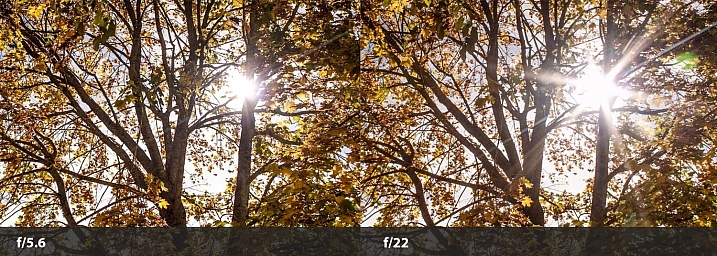
In the split image above, the f/5.6 shot is a softer looking flare, and the f/22 is more defined. The points of the flare are created by the blades of the aperture inside your lens. When they come closer together (as with narrow apertures like f/22) you get more defined points on your flares.
Using different apertures will give you a variety of looks to choose from when you’re editing. You’ll also learn which type of sun flare you prefer, depending on the setting and feel you want in your photo.
2. Use Aperture Priority Mode
The easiest way to use tip #1 is to put your camera in Aperture Priority Mode (AV on a Canon, or A on a Nikon). This way, you’ll be able to easily switch the aperture setting. With your camera set to auto ISO, it will automatically choose the ISO and shutter speed settings for you.
Now you’ll be able to quickly switch apertures and see the difference it makes to your sun flares. Learn more here: Aperture Priority and Shutter Priority: Exposure Lesson #1
3. Partially hide the sun
Use an object (such as a fence post, building, tree, etc.) to partially hide the sun. This will allow you to capture flare, and add an artistic touch to the object you’re shooting.
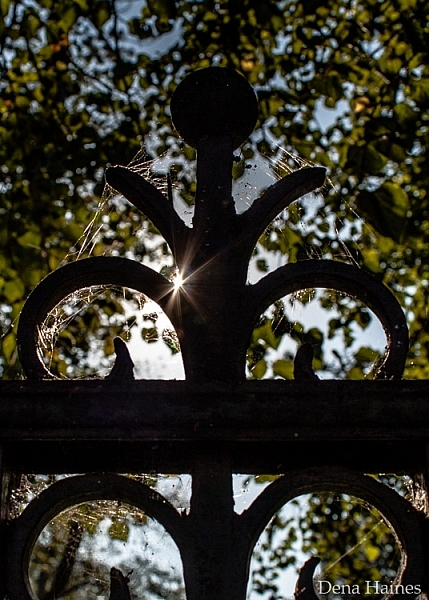
Move around the object, let the sun peek out at different locations as you keep taking photos. I love doing this, and I always come away with something unique.
4. Move around and take lots of pictures
When shooting sun flares it really helps to move around – a lot. If you are partially hiding the sun (as mentioned above in #3) a slight movement to the right or left will cause a big change in the flare. Your photo could be flooded with too much light, or you might miss the flare altogether. Or it could reveal the flare in just the right spot, and create exactly the look you want.

It’s important to take lots of pictures. You’ll learn how much sun to include, in relation to the amount of flare you want.

Sun flares can be unpredictable, that’s part of what makes them fun to work with.
5. Try using some filters
When photographing sun flares, filters can also be helpful:
- UV filter: This is a good idea because you will be shooting into the sun. Some photographers feel that a UV filter will protect your camera’s sensor.
- Polarizing filter: This will help you get different effects as you rotate it. This filter can help increase color saturation and decrease reflections. If you have one, play around with it and see how it affects the flares.
- Graduated neutral density filter: These filters are darker at the top, and become lighter near the bottom. They can prevent part of the image from looking blown-out, from shooting into the sun.
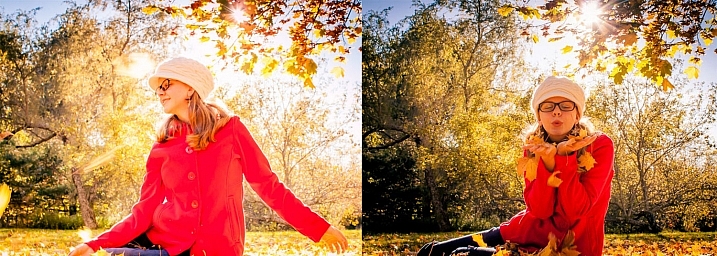
In the above image, I used a graduated neutral density filter for the photo on the right. It helped control the light, which kept the colors richer. Learn more about polarizing and graduated neutral density filters.
6. Shoot during different times of day
Around sunrise and sunset, the sunlight comes in at a unique angle. This creates a warmer, golden color., whereas during midday, there is a cooler (bluish) or more neutral color.
In the following image, two of the photos were taken around sunset, and the other two were taken a few hours after sunrise. Can you guess when each photo was taken?
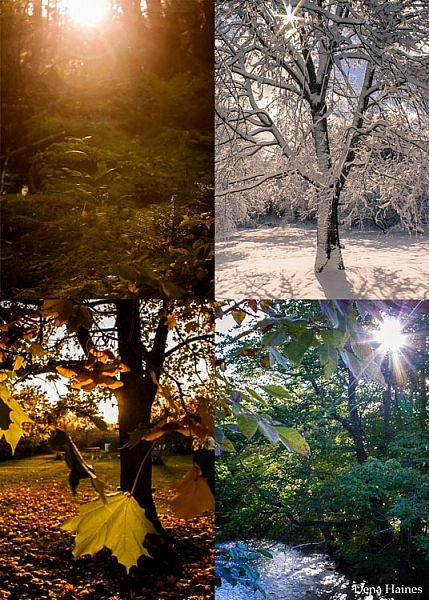
I bet you got it right – the ones on the left were taken near sunset. They have a warmer feel, don’t they? The ones on the right have a cooler feel. Learn more here: Understanding Natural Light Part 2: Color of Light.
7. Divide the sun with your camera
You can get a softer, more diffused look by composing your photo so that the sun is not fully in your frame. Try cutting the sun in half, or only including its bottom third.

Play with it. Create different effects and see which you prefer.
8. Use a tripod and a remote shutter release
As mentioned earlier, a smaller aperture setting (higher number) will give you a sharper, more defined flare. But, using a small aperture also means that your camera will require more time to take the photo. The longer it takes, the more chance there is for camera shake to cause blur in your photo.
If you are hand-holding your camera, this could be a problem. When your camera is on a tripod, there is much less chance of camera shake.
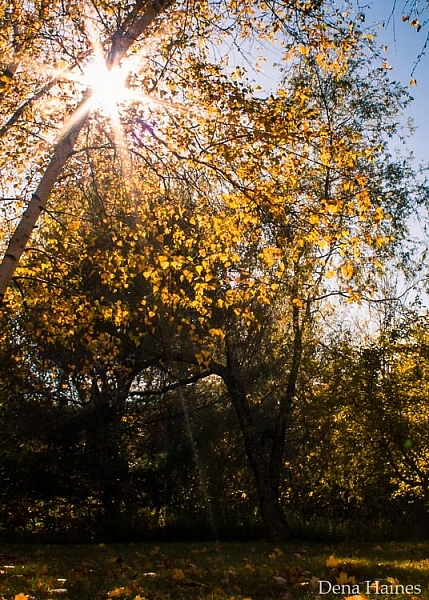
Using a tripod will help keep your photos looking sharp and your sun flares crisp. By using a remote shutter release (or your camera’s self-timer) you’ll reduce camera shake even more.
9. Keep the sun at your model’s back
By keeping the sun at your model’s back, you’ll allow the light of the flare to spill out around them in interesting ways.

Depending on the time of day, you might need to lay down, and have your model sit or lay down. The above image was taken around 3:00 p.m. in the afternoon, and I was laying on the ground.
The higher the sun is, the lower you’ll need to be in order to place the flare at your model’s head, or shoulder level. Having your model sit down will make it easier for you. When the sun is lower in the sky, positioning becomes easier for both of you.
10. Use a reflector
A reflector is used to reflect the light back onto your subject. Reflectors are usually made of fabric (white, silver or gold) and can be hand-held, hung from a freestanding base, or placed on the ground.
Using a reflector could be helpful if your model is in the shade. It would help to brighten their face, making the photo look more pleasing.
11. Cover the sun with your hand to focus
It can be hard to focus when shooting sun flares. There is so much light, that your camera may struggle to lock on where you want. When this happens, hold up your hand to cover the sun, compose your photo, and press your shutter release halfway. Once your camera focuses, take your hand down and press the shutter the rest of the way.
You may have to try this a number of times until you get exactly what you want.
12. Place the sun out of the frame
To get a really soft flare effect, without a bright point, try placing the sun out of your frame.
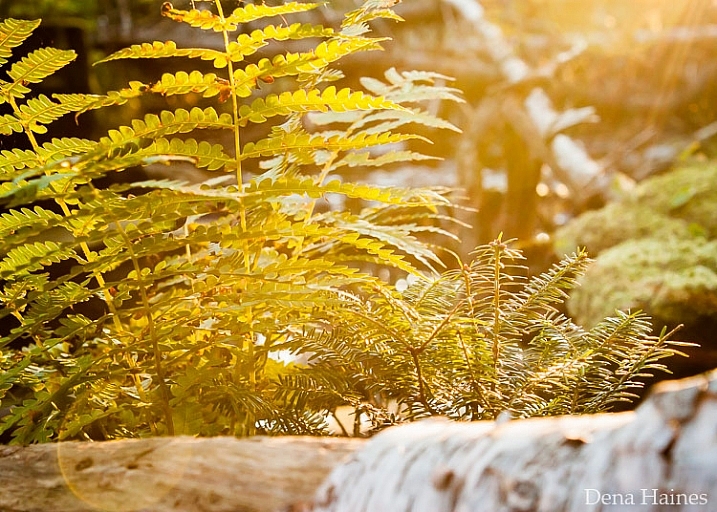
I love how this adds soft light to the above photo, and how the eye is drawn up to the source of light.
13. Use Spot Metering
Spot Metering handles bright light really well, so if you’ve got the choice, go with this metering mode. All but one of the photos in this post were taken using it. If your camera does not have Spot Metering, then Partial Metering would be your next best choice. I use autofocus, with the focus point set to the center.
14. Have fun
This last tip is probably the most important. When photographing sun flares, it’s time to experiment and have fun.
Don’t be afraid to take tons of pictures, try different aperture settings, and move around. Sun flares are wild and unpredictable. Be creative and use different objects to block (or diffuse) the light. You’re bound to get lots of over, and under exposed photos, but you’ll get lots of gorgeous results as well.
Learn more about Using Sun Flares and Starbursts to Create Stunning Images.
Now it’s your turn
I would love to see your sun flare photos and hear your tips! Please share them below.
The post How to Photograph Sun Flares: 14 Tips for Beginners by Dena Haines appeared first on Digital Photography School.